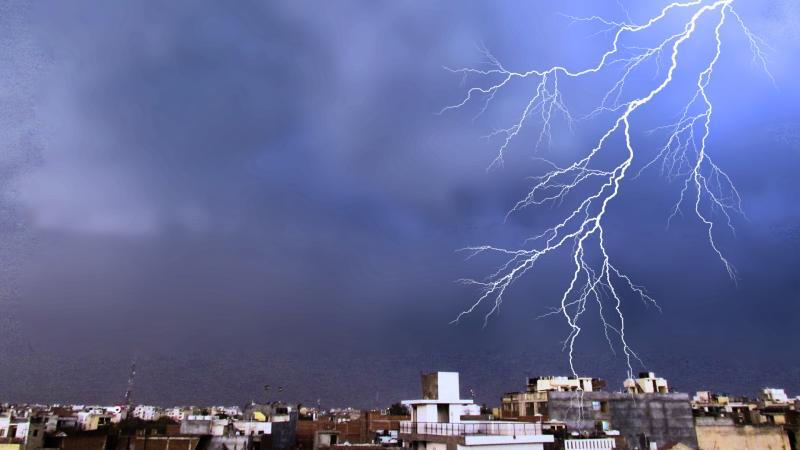
Study Shows How Landscapes and Human Activity Impact Lightning
Lightning may seem like a random and unpredictable phenomenon, but a new study has revealed that landscapes and human activity can significantly impact the frequency and patterns of lightning strikes. The research, conducted in India, provides valuable insights into the complex relationships between land use, elevation, and weather conditions that shape lightning activity.
The study, published in the Journal of Geophysical Research: Atmospheres, analyzed data from 2000 to 2019 on lightning strikes across India, covering a diverse range of landscapes, from urban areas to forests and mountains. The researchers found that human activity zones, such as cities and agricultural areas, experienced significantly more lightning strikes than natural landscapes like forests.
In cities, the high concentration of buildings, roads, and other infrastructure creates a unique environment that amplifies the electrical charges in the atmosphere, leading to more lightning strikes. The study found that urban areas accounted for more than 70% of all lightning strikes, despite occupying only about 2% of the country’s land area.
In contrast, forests and other natural areas experienced moderate levels of lightning activity, with fewer and less intense strikes. This is likely due to the natural vegetation and topography of these areas, which can dissipate electrical charges and reduce the likelihood of lightning strikes.
Elevation also played a significant role in determining lightning strike rates, particularly in the Himalayas. The study found that as elevation increased, the frequency and intensity of lightning strikes also increased. This is likely due to the fact that higher elevations experience more frequent and intense thunderstorms, which are associated with increased lightning activity.
The researchers used a combination of satellite data, weather stations, and lightning detection systems to analyze the data. They also developed a statistical model to account for the complex relationships between land use, elevation, and weather conditions.
So, what does this mean for urban planning and sustainable land management?
Understanding the impact of landscapes and human activity on lightning strikes can inform more effective and sustainable urban planning strategies. For example, cities could incorporate more green spaces and natural areas into their designs to reduce the risk of lightning strikes. Additionally, building codes and emergency preparedness plans could be adapted to account for the increased risk of lightning strikes in urban areas.
In terms of land management, the study highlights the importance of preserving and restoring natural habitats like forests. These areas not only provide habitat for wildlife but also play a critical role in regulating the local climate and reducing the risk of lightning strikes.
The findings of this study also have implications for climate change research and policy. As the global climate continues to change, understanding the interactions between land use, elevation, and weather patterns is crucial for predicting and mitigating the impacts of extreme weather events like lightning storms.
In conclusion, this study demonstrates the complex and dynamic relationships between landscapes, human activity, and lightning activity. By understanding these patterns, policymakers, urban planners, and land managers can work together to create safer, more sustainable, and more resilient communities.
Source:
https://researchmatters.in/news/lightning-and-landscapes-how-land-and-weather-shape-lightning-india






